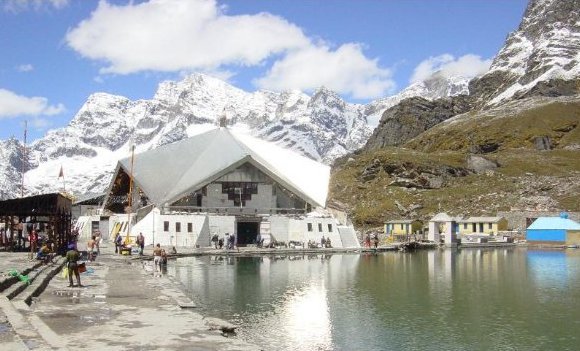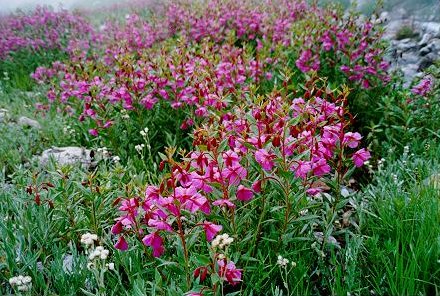India's environmental crusader to the Valley of ![]()

Jyotsna Sitling speaks to India-based freelance journalist Neeta Lal.
Soon after taking over, I launched a vigorous movement to save the park from further degradation. We first planned to rid it of mountain-high piles of plastic and non-biodegradable waste strewn by pilgrims over three decades of visiting the Sikh religious site of Hemkund Sahib each year. To achieve this, a community-based waste management program involving the local populace was fleshed out. The highly irresponsible environmental behavior of the pilgrim traffic had totally wrecked the beautiful surroundings, resulting in accumulation of tons of putrescent garbage (plastic bags, bottles, rain coats, sundry packets) and non-degradable waste.
The 19km trek route was impacted further by some 400-odd shops illegally installed by locals. Their plastic waste had literally filled the whole area. The region's verdant slopes, once a green canvas punctuated with sweet-smelling flowers, were transformed into junkyards through a mindless act of man. The fragile eco-system of the entire valley was under duress due to this pilgrim traffic.
Of course it was tough to motivate the local people for the unglamorous task of cleaning up the area, but we just plunged headlong into it. I made the Park staff understand the social and livelihood dynamics of the community which could be decisive in preserving it. This was followed by giving them focused training and mentoring them regularly to equip them professionally to handle community-initiated conservation processes. Being a woman, the male staff saw me as a role model to initiate such processes in the garbage-ridden VFNP.
 For starters, we cobbled an eco-development committee (EDC) comprising the local people, especially women and hired garbage collectors who worked on a monthly salary of 1,000 rupees (about GBP11) with an additional commission of 5 rupees per garbage bag. After working tirelessly for 14 months, my team collected a whopping 44 tons of garbage in 14,000 gunny bags. The collected garbage matched the surrounding towering peaks in height.
For starters, we cobbled an eco-development committee (EDC) comprising the local people, especially women and hired garbage collectors who worked on a monthly salary of 1,000 rupees (about GBP11) with an additional commission of 5 rupees per garbage bag. After working tirelessly for 14 months, my team collected a whopping 44 tons of garbage in 14,000 gunny bags. The collected garbage matched the surrounding towering peaks in height.
This garbage was transported on horseback to New Delhi for recycling. The heaps also included tons of mule dung because about 500 mules go up and down this religious stretch from May to October each year - the main five pilgrimage months. Despite the garbage's volume, we didn't take any eco-unfriendly short cuts like burning, burying or draining off of refuse.
On July 14, 2005, I got that historic call from UNESCO informing us about VFNP being granted World Heritage Status. It was an exhilarating moment. I still get goose flesh thinking about that call, which symbolised our triumph against such massive odds. Apart from bestowing a prestigious global honor, the WHS status has had other positive benefits as well - like attracting a lot more international tourists and global conservation funds. Our unique experiment has proved that there's nothing that can't be achieved if people choose to work together, even if the task is of 'Himalayan' proportions. Nanda Devi, the venerable Goddess of Uttaranchal, has every reason to smile.

